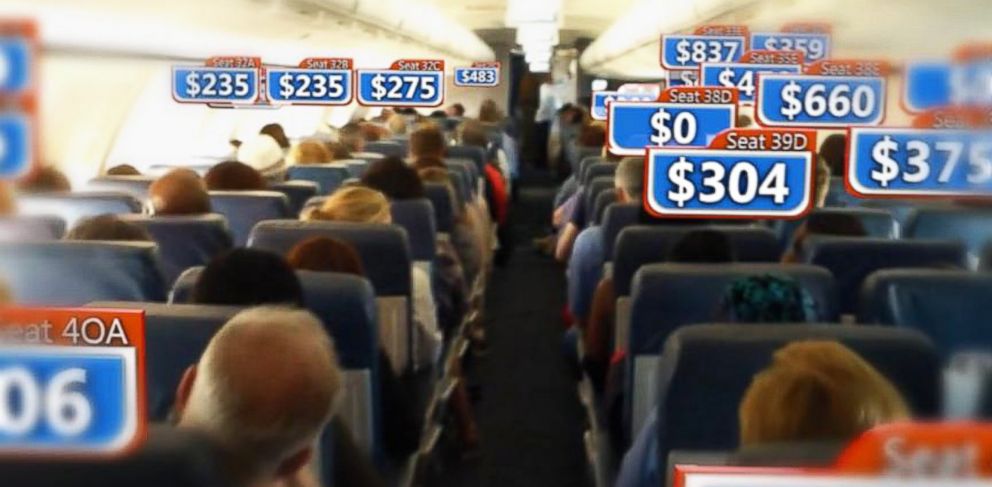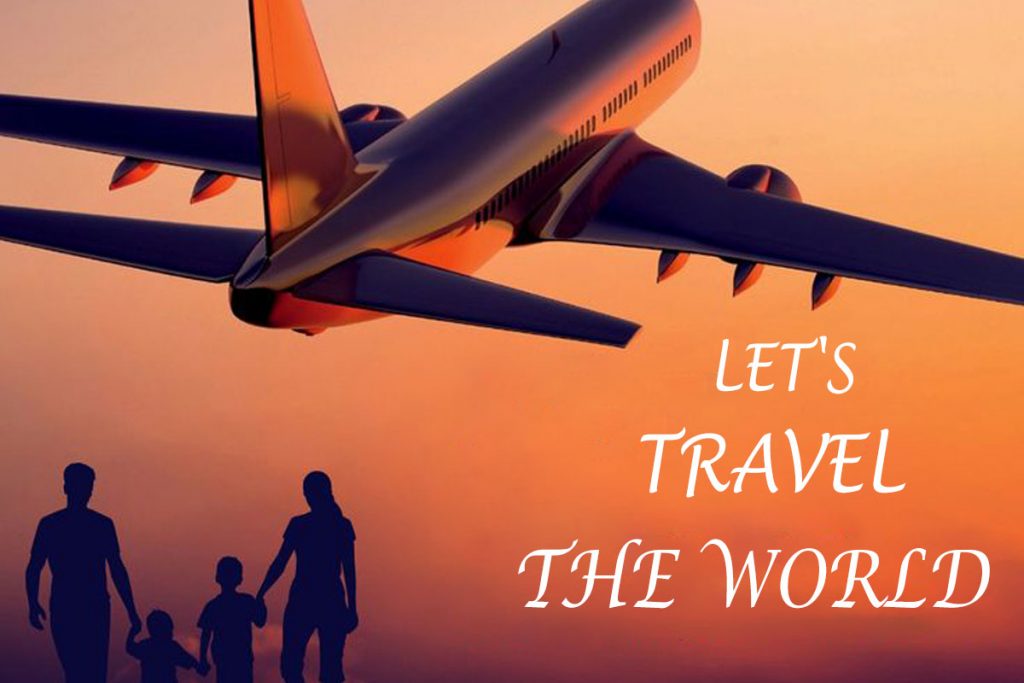As business travel operating cost nose upward, companies are realizing that better cost-management technique can make a difference
Corporate travel expenses rocketed to more than $143 billion in 1994, according to American state most recent survey on business travel running. Private-sector employers spend an likely $2,484 per employee on travel and activity, a 17 percent add to over the past four years.
business T&E costs, now the third-largest controllable expense after sales and data-processing costs, are under new scrutiny. Corporation is realize that even a savings of 1 percent or 2 percent can translate into millions of dollars added to their base line.
reserves of that order are sure to get management’s notice, which is a requirement for this type of project. Involvement begins with understanding and evaluates the components of T&E management in order to control and monitor it more successfully.
Hands-on management include assigning blame for travel management, implement a quality-measurement system for travel services used, and writing and distribute a formal travel policy. Only 64 percent of U.S. Corporation have travel policies.
Even with senior management’s support, the road to savings is rocky-only one in three company has successfully institute an internal program that will help cut travel expenses, and the myriad aspect of travel are so irresistible, most companies don’t know where to start. “The business of travel is based on in order,” says Steven R. Schoen, creator and CEO of The Global Group Inc. “Until such time as a traveler in fact sets foot on the plane, they’ve [only] been purchase in order.”
If that’s the case, information technology seems a viable place to hammer out those subtle, but very adored, savings. “Technological innovation in the business travel business is allow firms to realize the potential of mechanization to control and reduce circuitous [travel] costs,” says Roger H. Ballot, leader of the Travel Services Group USA of American Express. “In adding, many companies are embarking on quality programs that include stylish process improvement and reengineering efforts designed to considerably improve T&E management processes and reduce roundabout costs.”
As companies look to technology to make latent savings a realism, they can get very creative about the method they employ.
The Great Leveler

central proviso systems were long the exclusive domain of travel agent and other industry professionals. But all that tainted in November 1992 when a Department of carrying ruling allowed the general public access to systems such as Apollo and SABRE. Travel-management software, such as Trip Power and Travel Net, immediately sprang up, providing corporation approaching into where their T&E dollars are being spent.
The software tracks expenses trends by interfacing with the corporation’s file and providing access to centralized condition systems that provide immediate reservation information to airlines, hotels and car rental agency. These programs also allow users to generate mechanized travel reports on cost savings with details on where discount were obtained, hotel and car usage and patterns of travel flanked by cities. Actual data gives corporations added power when negotiate discounts with travel suppliers.
“When you own the information, you don’t have to go back to square one every time you decide to change agency,” says Mary Savvier Stephens, travel manager for biotech giant Chiron Corp.
Sybase Inc., a client/server software leader with annual T&E finances of more than $15 million, agrees. “Software gives us record visibility into how employees are expenses their travel dollars and better leverage to discuss with travel service suppliers,” says Robert Lerner, manager of credit and corporate travel services for Sybase Inc. “We have improved access to data, faster, in a real-time surroundings, which is expected to bring us big savings in T&E. Now we have control over our travel information and no longer have to depend solely on the agency and airlines.”
The cost for this freedom depends on the volume of business. One-time purchases of travel-management software can run from in $100 to more than $125,000. Some software provider will house smaller users by selling software little by little for $5 to $12 per booked trip, still a major savings from the $50 industry norm per deal.
No More Tickets

Paperless travel is infectious on faster than the paperless office ever did as both service provider and consumers work jointly to reduce ticket prices for business travelers. Perhaps the most advanced of the advances is “ticketless” travel, which almost all major airlines are taxing.
In the interim, travel providers and agencies are experiment with new technologies to enable travelers to book travel services via the Internet, e-mail and unattended ticketing kiosks. Best Western global, Hyatt Hotels and several other major hotel chains market on the Internet. These services decrease the need for paper and offer better service and such marginal benefits as increased competence, improved tracking of travel expenses and trends, and cost decrease.
Dennis Golf, CFO of the Veterans Affairs Medical Center in Louisville, Ky., realize that the medical center’s decentralized location, a quarter-mile from the hospital, made competence hard. “We were losing making time and things got lost,” he says. “Every memo had to be hand-carried for approval, and we required seven dissimilar copies of each travel order.” As a result, Golf tried an off-the-shelf, paper-reduction software package intended for the central government.
The software allows the hospital to run travel on-line, from tracking per-diem allowances and scheming expenses to generate cash advance forms and authorize reimbursement vouchers. The software also lets the sanatorium keep a running account of its travel expenses and its remaining travel finances.
“Today, for all sensible purposes, the system is paperless,” says Engulf. The software has helped the hospital reduce document dispensation time by 93 percent. “The original goal alert on running worker travel without paper,” he says. “We have achieved that goal, in part due to the labors of the staff and in part due to the accuracy of the software.”
With only a $6,000 asset, the hospital saved $70 each employee trip and saved roughly half of its $200,000 T&E financial plan from side to side the paper-reduction program.
Out There

Consolidation of corporate travel planning by fewer agencies has been a rising trend since 1982. Nearly three out of four companies now make travel plans for their business locations from side to side a single agency as opposite to 51 percent in 1988. Two major benefits of agency consolidation are the facilitation of office and T&E budget, as well as leverage in negotiate future travel discounts.
A major technological advance that allows this consolidation trend to flourish is the foreword of settlement ticket printer (STPs). Using STPs enable a travel agency to merge all operation to one home office, and still send all essential tickets to various locations right away via various wire services. As the term implies, the machines prints out airline tickets on-site right away, eliminate delivery charges.
For London Fog, STPs are a approval. London Fog’s annual T&E financial plan of more than $15 million is split equally between its two locations in Eldersburg, Md., and New York City. Each location purchases the same number of tickets, so equal access to ticketing from their group is a must. With an STP in their two locations, the company services both offices with one group in Baltimore. Each office has access to instant tickets and still manages to save by not have to pay courier and express mail charge that can range up to $15 for each of the more than 500 tickets each purchase annually.
Coned Nast publication annual T&E budget of more than $20 million is allocated among its location in Los Angeles, San Francisco, Chicago, New York and Detroit. Since 1994, travel planning have been handled by a central agency, Advanced Travel Management in New York City, by install an STP in each of these five location. In addition to increased competence due to consolidation, Coned Nast now has the ability to change travel plans at a moment’s notice and have new tickets in hand right away.
The real benefit is that the machines are owned and maintain by the travel group., so there is no cost to the company. Due to the major expense involved, however, STPs remain an choice only for major ticket purchasers. “STPs are a viable option in this process for any location that purchase more than $500,000 per year in tickets,” says Shone.
As airfare averages 43 percent of any company’s T&E operating cost, savings available through the various uses of technology have become staged. For example, the ability of corporation to collect and investigate their own travel trends has led to the creation of net-fare purchasing-negotiating a price between a business and an airline to purchase tickets that does not include the added fixed cost of commissions, override, transaction fees, agency transaction fees and other discount.
while most major U.S. carriers publicly proclaim that they don’t discuss corporate discounts below published market fares, the American state survey on business travel running found that 38 percent of
U.S. companies had access to, or by now had implement, negotiated airline discount. The availability and mechanics of these planning vary widely by carrier.
What’s the Price?

Fred Shaffer, transportation manager for Hewlett-Packard and a strong backer of the net-pricing system, has pioneered the concept of fee-based price with travel-management companies under bond with H-P. He states that H-P, which spend more than $528 million per year on T&E, plans to have all air travel based on net-fare price. “At the present time, we have several net fares at various stages of accord,” he says. “These fares are negotiate with the airlines at the business level, and then trickle down to every of our seven physical region.”
Frank Kent, Western regional manager for United Airlines, concurs: “unified Airlines contribute in corporate volume discount, such as bulk ticket purchases, but not with net price. I have yet to see one net-fare accord that makes sense to us. We’re not opposed to it, but we just don’t appreciate it right now.”
Kent stress, “Airlines should move toward corporation with long-term planned relatives fairly than just discounts. We would like to see ourselves dedicated to a business rather than just involved.”
As business travel expenses nose up, companies are realizing that better cost-management techniques can make a disparity.
Corporate travel expenses rocket to more than $143 billion in 1994, according to American Express’ most recent survey on business travel management. Private-sector employer spends an likely $2,484 per employee on travel and activity, a 17 percent increase over the past four years.
business T&E costs, now the third-largest convenient expense behind sales and data-processing costs, are under new scrutiny. corporation are realizing that even a savings of 1 percent or 2 percent can render into millions of dollars added to their base line.
Savings of that order are sure to get management’s attention, which is a obligation for this type of project. participation begins with sympathetic and evaluating the components of T&E running in order to control and monitor it more successfully.
Hands-on running includes assigning blame for travel management, implement a quality-measurement system for travel services used and writing and distribute a formal travel policy. Only 64 percent of U.S. corporations have travel policies.
Even with senior management’s support, the road to savings is rocky-only one in three company has successfully institute an internal program that will help cut travel fixed cost, and the myriad aspect of travel are so irresistible, most companies don’t know where to start. “The business of travel is based on information,” says Steven R. Schoen, founder and CEO of The Global Group Inc. “Until such time as a traveler actually sets foot on the plane, they’ve [only] been purchase information.”
If that’s the case, information technology seems a viable place to mallet out those indefinable, but highly sought-after, savings. “Technological innovation in the business travel industry is allowing firms to realize the possible of automation to control and reduce circuitous [travel] costs,” says Roger H. Ballot, president of the Travel Services Group USA of American Express. “In adding, many companies are embark on quality programs that include stylish process improvement and reengineering efforts designed to considerably improve T&E running processes and reduce not direct costs.”
As companies look to technology to make possible savings a reality, they can get very original about the methods they employ.
The Great Leveler

central condition systems were long the exclusive domain of travel agent and other industry professionals. But all that changed in November 1992 when a section of Transportation ruling allowed the general public access to system such as Apollo and SABRE. Travel-management software, such as Trip Power and Travel Net, immediately sprang up, if corporations approaching into where their T&E dollars are being spent.
The software tracks expenses trends by interfacing with the corporation database and if access to central reservation systems that provide immediate condition information to airlines, hotels and car rental agency. These programs also allow users to generate automated travel reports on cost savings with details on where discounts were obtain, hotel and car usage and pattern of travel between cities. Actual data gives corporation added leverage when negotiate discounts with travel suppliers.
“When you own the information, you don’t have to go back to square one every time you make a decision to change agency,” says Mary Savvier Stephens, travel manager for biotech giant Chiron Corp.
Sybase Inc., a client/server software leader with an annual T&E financial plan of more than $15 million, agrees. “Software gives us unparalleled visibility into how employees are expenses their travel dollars and better leverage to negotiate with travel service supplier,” says Robert Lerner, manager of credit and corporate travel services for Sybase Inc. “We have improved access to data, faster, in a real-time setting, which is expected to carry us big savings in T&E. Now we have control over our travel in order and no longer have to depend wholly on the agency and airlines.”
The cost for this freedom depends on the volume of business. One-time purchase of travel-management software can run from under $100 to more than $125,000. Some software provider will house smaller users by selling software little by little for $5 to $12 per booked trip, still a major savings from the $50 industry norm per deal.
No More Tickets

Paperless travel is infectious on faster than the paperless office ever did as both service provider and consumers work jointly to reduce ticket prices for business travelers. maybe the most progressive of the advances is “ticketless” travel, which almost all major airlines are difficult.
In the interim, travel providers and agencies are experiment with new technologies to enable travelers to put your name down for travel services via the Internet, e-mail and unattended ticketing kiosk. Best Western global, Hyatt Hotels and several other major hotel chains market on the Internet. These services reduce the need for paper and offer improved service and such marginal benefits as augmented competence, improved tracking of travel expenses and trends, and cost decrease.
Dennis Engulf, CFO of the Veterans Affairs Medical Center in Louisville, Ky., realize that the medical center’s decentralized location, a quarter-mile from the hospital, made competence difficult. “We were losing making time and things got lost,” he says. “Every memo had to be hand-carried for approval, and we required seven diverse copies of each travel order.” As a result, Engulf tried an off-the-shelf, paper-reduction software package calculated for the federal rule.
The software allows the hospital to manage travel on-line, from track per-diem allowance and devious expenses to generate cash advance forms and authorize repayment vouchers. The software also lets the hospital keep a running account of its travel fixed cost and its residual travel finances.
“Today, for all sensible purposes, the system is paperless,” says Engulf. The software has helped the hospital reduce document dispensation time by 93 percent. “The original goal focused on organization employee travel without paper,” he says. “We have achieve that goal, in part due to the labors of the staff and in part due to the correctness of the software.”
With only a $6,000 asset, the hospital saved $70 each employee trip and saved almost half of its $200,000 T&E financial plan from side to side the paper-reduction program.
Out There

Consolidation of corporate travel planning by fewer agencies has been a rising trend since 1982. Nearly three out of four companies now make travel plans for their business locations from side to side a single group as opposed to 51 percent in 1988. Two major payback of agency consolidation are the facilitation of accounting and T&E budget, as well as leverage in negotiate future travel discounts.
A major technological advance that allows this consolidation trend to flourish is the foreword of satellite ticket printer (STPs). Using STPs enables a travel agency to merge all operation to one home office, and still send all necessary tickets to various locations instantly via various wire services. As the term imply, the machinery prints out airline ticket on-site right away, eliminate delivery charges.
For London Fog, STPs are a approval. London Fog’s annual T&E financial plan of more than $15 million is split equally flanked by its two locations in Eldersburg, Md., and New York City. Each location purchase the same number of ticket, so equal access to ticketing from their agency is a must. With an STP in their two locations, the company services both office with one group in Baltimore. Each office has access to immediate tickets and still manages to save by not having to pay courier and express mail charges that can range up to $15 for each of the more than 500 tickets each purchases yearly.
Conde Nast publication annual T&E budget of more than $20 million is allocated amid its locations in Los Angeles, San Francisco, Chicago, New York and Detroit. Since 1994, travel planning have been handled by a central agency, Advanced Travel Management in New York City, by install an STP in each of these five locations. In addition to augmented efficiency due to consolidation, Coned Nast now has the ability to change travel plans at a moment’s notice and have new tickets in hand right away.
The real benefit is that the machines are owned and maintained by the travel agency. so there is no cost to the company. Due to the major cost involved, however, STPs remain an option only for major ticket purchasers. “STPs are a viable option in this process for any location that purchases more than $500,000 per year in tickets,” says Shone.
As airfare averages 43 percent of any company’s T&E fixed cost, savings available through the various uses of technology have become staged. For example, the skill of corporation to collect and analyze their own travel trends has led to the creation of net-fare purchasing-negotiating a price flanked by a corporation and an airline to purchase tickets that does not include the added expenses of commissions, overrides, transaction fees, group transaction fees and other discount.
though most major U.S. carriers publicly proclaim that they don’t discuss corporate discount below published market fares, the American Express survey on business travel running found that 38 percent of U.S. companies had access to, or already had implement, talk airline discounts. The availability and mechanics of these planning vary widely by carrier.
What’s the Price?

Fred Shaffer, transportation manager for Hewlett-Packard and a strong backer of the net-pricing system, has pioneer the concept of fee-based price with travel-management companies under bond with H-P. He state that H-P, which spends more than $528 million per year on T&E, plans to have all air travel based on net-fare pricing. “At the their time, we have several net fares at various stage of agreement,” he says. “These fares are negotiated with the airlines at the business level, then trickle down to each of our seven physical region.”
Frank Kent, Western local manager for United Airlines, concurs: “United Airlines participate in corporate volume discount, such as bulk ticket purchases, but not with net price. I have yet to see one net-fare accord that makes sense to us. We’re not opposed to it, but we just don’t understand it right now.”
Kent stress, “Airlines should approach corporations with long-term planned dealings rather than just discounts. We would like to see ourselves loyal to a corporation rather than just concerned.”



